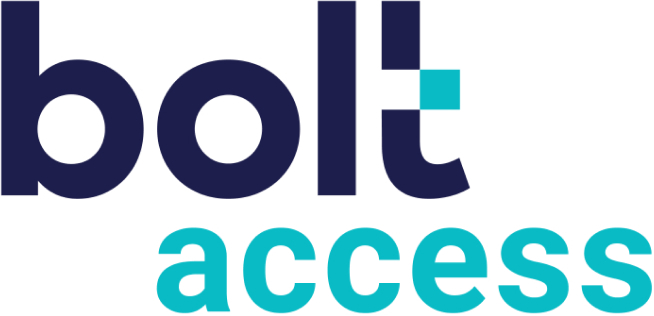
"The vast majority of small businesses are now on Facebook. A 2017 study by eMarketer places this number at 80 percent — nearly 30 percent higher than the next social network of choice, Twitter. And it’s easy to see why: There were over 2.23 billion Facebook users in the second quarter of 2018, the team at Statista writes. So the sheer size makes it an appealing resource for small, local businesses, including independent insurance agents. While the potential is there, many brands fall short because they simply don’t get the engagement needed to thrive. In fact, there’s been a significant decline in the average amount of engagement in recent years. Facebook engagement dropped 20 percent during the first half of 2017, Steve Rayson at BuzzSumo writes — something that’s primarily due to an algorithm update. Let’s now discuss how you can make meaningful connections with your Facebook followers and some common traps that independent agents should avoid.
Post at the Right Time
The importance of properly timing your posts cannot be overstated, and Brent Barnhart makes a great point at Sprout Social when he discusses scheduling. His logic is quite simple. “By posting when your followers are most active, you instantly increase the likelihood of getting likes and comments.” Otherwise, the impact will be minimal if hardly anyone is logged into to see it. So what’s the best time to post on Facebook? Marketing strategist Nathan Ellering wrote an exhaustive article on CoSchedule that synthesized data from 23 different studies. “The best time to post on Facebook is 1-4 p.m. late into the week and on weekends,” he found. More specifically:
- Saturday and Sunday at 12-1 p.m.
- Thursday and Friday at 1-4 p.m.
- Wednesday at 3 p.m.
Keep in mind that there’s a lot of different data that went into this, and it’s not necessarily one-size-fits-all for every single brand. So it’s smart to use Facebook Analytics or a similar tool to keep track of what your engagement level is according to the time in which you post. A little trial and error should help you find the optimal time.
Create Plenty of Video Content
Rayson offers some theories as to why overall engagement levels have dropped. One of which is the volume of content that appears in users’ feeds. “Facebook say there are now on average 1,500 stories that could appear in a person’s feed. So competition is increasing and not everything can be shown,” he writes. With more competition, simply getting your content seen is half the battle. And with more brands paying for exposure with Facebook ads, small businesses going the organic route have their work cut out for them. So how do you increase the odds of your company’s content being shown? Posting captivating video is one of your best bets, Dan Virgillito at Adespresso writes. Facebook has adjusted its news feed algorithm with the intention of providing better videos to its audience. “For greater attention, brands need to post exclusive videos and include links to content such as their products/services,” he explains. Virgillito also notes that top performing videos are short, grabbing the viewer’s attention right off the bat. Also keep in mind that many users will have the volume turned off, so it’s smart to include text captions whenever possible. Barnhart agrees about the effectiveness of video: “Facebook isn’t shy about how much they love video content on their platform,” he writes. However, you’ll want to get serious about it and go beyond simply copy-and-pasting links to your YouTube channel. Instead, you’re better off creating native videos that are specifically intended for your Facebook audience. Trusted Choice CMO Ryan Hanley says this is especially advantageous for independent agents and can be instrumental in increasing your reach. You may also want to experiment with Facebook Live — their live streaming platform. Jon Fingas at Engadget points out that nearly two billion people have watched one of these broadcasts, which makes them a popular way to connect with customers. In terms of length, live videos should be longer than regular videos. Owner Daniella Norwood and her team at Ella J Designs explain that a live video should be a minimum of 10 minutes and an absolute maximum of four hours. It should also be noted that video receives the highest amount of engagement compared to any other content format on Facebook. In fact, Rayson reports that it now receives twice the level of engagement of other post formats on average. So if you’re looking to not only get your content to appear in your followers’ feeds but also get them to check out it, video is perhaps the best way to do it.
Post High-Quality, Unique Images
Humans are visual creatures by nature. It should come as no surprise then that posting outstanding images can have a positive impact on engagement. Indeed, posts that include images receive 650 percent higher engagement than those without, MobileMonkey CEO Larry Kim writes. There’s a caveat. You can’t post generic stock photos and expect your engagement to go through the roof. Most people have developed an aversion to these types of images and will simply overlook them. Instead, what you want is original, eye-popping photos that you either took yourself or hired a professional to take. And there’s more. “You need to not only use pictures that are high-quality and unique, you need to make sure those pictures relate to your brand and stimulate engagement,” Dan Slagen at Social Media Examiner writes. So if you’re creating a post around commercial auto insurance, you may want to incorporate an image of one of your local customer’s vehicles that they use for their business. And while not always appropriate for every situation, social media specialist Janet Johnson recommends throwing in some humorous images whenever it makes sense. As long as it’s done in moderation, this can motivate a good chunk of your audience to engage with your images, and some may even go viral. In their list of more than 100 Facebook marketing ideas for insurance agents, the InsuranceSplash team shows an example of a funny boat owner claim picture. They say that it would be especially useful if you also provided information about and links to boating safety courses.
Ask Key Questions to Encourage Engagement
You probably already use this technique in blog posts, but it’s effective on Facebook to: ask questions. To get more comments on your Facebook posts, SEO consultant and founder of MyBlogU, Ann Smarty says to ask key questions that trigger a natural human reflex called “instinctive elaboration.” Questions hijack the brain, David Hoffeld, author of “The Science of Selling,” explains, consuming thought processes so it can’t contemplate anything else. If you get it just right, most people will feel compelled to chime in with an answer, which will inevitably get a conversation started. Smarty says that a good question typically has three main qualities:
- Open — It encourages discussion.
- Timely — It concerns a trending topic.
- Easy — It isn’t complicated, so invites quick responses.
Gear Each Post Around a Targeted Audience
Knowing your Facebook audience is crucial to engagement. Brands need to ditch the “spray and pray” technique where you post a high volume of untargeted content, Sophia Bernazzani at HubSpot writes, and opt for a hyper-targeted approach instead. This is where every single post is created with a specific audience in mind, or in some cases, a segment of that audience. “The goal is to get as much interaction from a single post as possible,” she adds. Being selective about what you post should ensure that your followers only see highly relevant content, which naturally makes them more likely to engage.
Offer Insurance Discount Tips
Another strategy is to share your knowledge as an insurance agent and use it to help your followers save money. This is one of the ideas that InsuranceSplash offers, and it’s a good one. By offering in actionable idea your customers can use, you should be able to boost the collective interest level of your audience as well as increase your number of likes, shares and comments. When it comes to car insurance, for example, Steve Bowen at QuoteWizard explains a few ways drivers can earn discounts, including:
- Use eco-friendly, alternative fuel.
- Take a defensive driving course.
- Drive less than 10,000 miles per year.
This is a great way to build instant rapport and get your audience to interact with your content.
Effectively Raising Your Engagement Level
It’s hard to stress enough just how critical Facebook engagement is. You could even argue that authentic engagement is one of the most important metrics for measuring your overall success. Social media engagement increases loyalty and word-of-mouth, Mike Eckstein at Buffer writes, and people genuinely love positive interactions with brands. Without engagement, the overall effectiveness of any marketing campaign is greatly reduced. Images by: rawpixel, kadettmann/©123RF Stock Photo, stockbroker/©123RF Stock Photo, Goumbik"
Talk to an expert
Contact us
